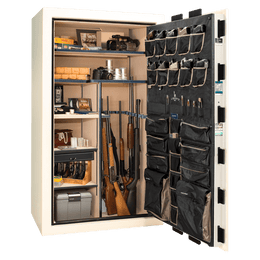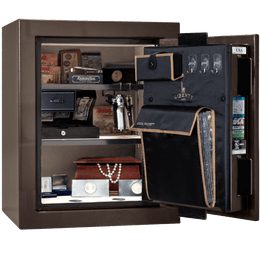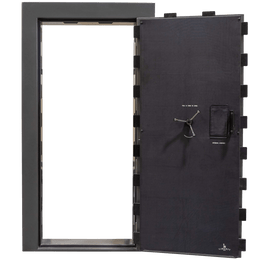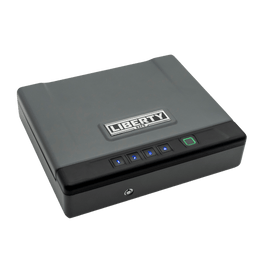Protecting Your Valuables from the Unexpected
When you invest in a home safe, you're not just buying a steel box; you're investing in peace of mind. While theft is a primary concern for many, the destructive power of a house fire is an equally significant threat to your most important documents and irreplaceable valuables. A typical house fire can reach temperatures of 1,100°F to 1,300°F, which is more than enough to turn paper to ash and damage sensitive items beyond repair. This is where understanding fire ratings becomes essential. A fire rating isn't just a number—it's a certification that tells you how long a safe can protect its contents in the extreme heat of a fire, giving you the confidence that what matters most is secure.
Navigating the world of fireproof safes can seem complex, with various labels, testing standards, and numbers. This guide will demystify these ratings, helping you interpret the technical jargon so you can make an informed decision and select a home safe that provides the right level of protection for your specific needs.
What is a Safe Fire Rating?
A safe's fire rating indicates the minimum amount of time it can withstand intense heat and flames while keeping its internal temperature below a specific threshold. It’s a measure of endurance certified by independent testing laboratories like Underwriters Laboratories (UL) or Intertek (ETL). These organizations subject safes to rigorous testing protocols that simulate real-world fire conditions to verify their protective capabilities.
It's important to note that no safe is completely "fireproof"—they are fire-resistant for a specified duration. The goal is to provide a window of protection that allows the fire to be extinguished before the heat inside the safe reaches a critical point, thus preserving the contents within.
Decoding the Numbers: Time and Temperature
Fire ratings are typically composed of two main parts: the maximum internal temperature and the duration of resistance. For example, a common rating you might see is "UL Class 350 - 1 Hour."
Temperature Classes:
- Class 350: This is the most common rating, designed to protect paper documents. It certifies that the safe's interior will not exceed 350°F. Paper begins to char at around 387°F and ignites at 451°F, so this temperature limit ensures documents remain legible.
- Class 150: This rating is for protecting magnetic tapes and photographic film, which are more sensitive to heat. The internal temperature must stay below 150°F and humidity below 85%.
- Class 125: The most stringent rating, Class 125 is necessary for protecting digital media like hard drives, USBs, CDs, and DVDs. These items can be damaged at much lower temperatures, so the safe must keep the interior below 125°F and humidity below 80%.
Duration Ratings:
The time component indicates how long the safe can maintain that internal temperature while being subjected to external furnace temperatures often reaching 1700°F or more. Common durations include:
- 30 minutes: Offers basic protection and may be suitable for homes in urban areas with fast fire department response times.
- 1 hour: A widely recommended standard for home safes, providing a solid balance of protection for most residential scenarios.
- 2 hours or more: Recommended for rural locations where response times may be longer, commercial buildings, or for storing highly valuable and irreplaceable items.
Beyond the Furnace: Additional Fire Tests
Reputable testing organizations don't stop at just heating the safe. To achieve a comprehensive rating, safes often undergo additional trials to simulate the chaotic environment of a real fire.
Explosion Hazard Test
This test involves placing the safe in a furnace preheated to 2000°F to see if it will explode due to a rapid pressure buildup from trapped moisture turning to steam. A passing safe remains intact and sealed.
Fire Impact Test
During a fire, floors can collapse. The impact test simulates this by heating the safe, dropping it from a height of 15 to 30 feet onto a hard surface, and then reheating it in the furnace. The safe must remain locked and protect its contents to pass, proving its structural integrity under extreme stress.
Did You Know?
The rigorous testing curves used by organizations like UL often subject safes to hotter temperatures, faster, than what occurs in an average house fire. This means a safe with a certified 1-hour rating is tested for a worst-case scenario and provides a substantial buffer of protection in typical fire conditions.
How to Choose the Right Fire Rating for Your Needs
Selecting the appropriate fire rating depends on a few key factors. Consider the following to determine the level of protection you need:
1. What Are You Protecting?
The type of items you plan to store is the most critical factor. For passports, birth certificates, deeds, and cash, a Class 350-rated safe is sufficient. If you are storing digital media or old family photos, you must opt for a more protective Class 125 or 150 safe.
2. Where Do You Live?
Your location plays a big role. If you reside in a city or suburb with a fire station nearby, response times will be quicker, and a 30- to 60-minute fire rating might be adequate. However, for those in rural areas where it may take longer for help to arrive, a 90-minute or 2-hour rating is a much safer bet.
3. Where Will the Safe Be Installed?
Consider the safe's placement in your home. A safe located on an upper floor might be more susceptible to falling through a collapsing floor during a fire, making an impact rating more important. Additionally, safes installed in a garage or workshop could be exposed to hotter, faster-burning fires involving flammable materials.
A National Commitment to Security
Across the United States, homeowners recognize the importance of protecting their families and property. From coast to coast, the threat of residential fires is a universal concern. Choosing a safe with a verified fire rating from a trusted American manufacturer ensures you are getting a product built to high standards of quality and reliability. At Liberty Safe, we are committed to providing that security, helping protect what matters most to families in every state.
Ready to Find Your Perfect Safe?
Understanding fire ratings is the first step toward securing your valuables. If you have more questions or need help finding a safe with the right level of protection for your home, our team of experts is here to assist you.
Contact Us TodayFrequently Asked Questions (FAQ)
What does the UL fire rating mean?
UL stands for Underwriters Laboratories, a third-party organization that tests and certifies product safety. A UL fire rating on a safe means it has passed rigorous tests for fire endurance, explosion risk, and sometimes impact, ensuring its protective capabilities are verified and trustworthy.
Is a fire-rated safe also waterproof?
Not necessarily. Fire resistance and water protection are separate features. While many high-quality fire safes incorporate door seals that offer some water resistance against fire hoses, you should look for a specific waterproof or water-resistance rating (often certified by ETL) if this is a primary concern.
Does a safe with a good fire rating also protect against theft?
Fire and burglary ratings are tested independently. A safe can have an excellent fire rating but offer minimal theft protection. For comprehensive security, look for a safe that has both a fire rating (like UL Class 350) and a burglary rating (such as UL RSC - Residential Security Container).
How much fire protection do I really need for my home?
For most homes in areas with reliable fire department coverage, a safe with a 60- to 90-minute fire rating offers excellent protection. The average house fire burns for about 20 minutes in a single area, so a 1-hour rating provides a significant safety margin. If you live in a rural area or a very large home, a longer duration is recommended.







